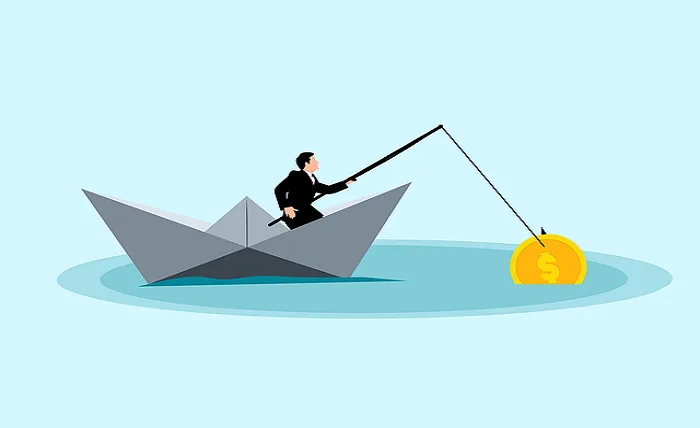Credit is a contract a lender or credit card issuer develops with rates and terms based on a borrower’s credit profile and score, financial standing, and debt status.
Loans are products set up to be repaid in equal monthly installments with fixed interest for a predetermined duration. In comparison, credit cards are revolving lines of credit with no set monthly installment or term.
In order to finalize a loan, the borrower signs the contract to have the lump sum disbursed and the first monthly invoice will follow. If the rates and terms are less than favorable, borrowers will consider refinancing at some point.
The objective is refinansieringbesterente or refinancing with the best interest rate to save the most money. The process of refinancing is to replace an original debt with a new product that saves money.
The new product could have lower interest, fewer or more payments depending on the term, fewer due each month or more, and on. The borrower typically refinances to change some aspect from the original debt to make it more agreeable to their current financial circumstances.
Many people favor refinancing high-interest credit cards with lower-interest products to eliminate the debt faster and with better terms. Refinancing isn’t suitable for every situation. It’s essential to weigh the pros and cons before committing.
Credit Card Refinance
Each method for refinancing credit card debt means to lower the interest rate that’s accrued over time. Experts recommend that credit card balances stay manageable so these can be paid as soon as invoices come due.
This would prevent balances from being carried to the next month and avoid interest from accruing and associated fees and charges. Most people are unable to keep their balances within a range they can repay with each monthly statement.
The interest not only accrues but also compounds as the months pass. Eventually, the debt cycles out of control if you pay only the minimum monthly due, ultimately ranging higher than the original balance. That’s a primary reason borrowers choose to refinance the debt.
Some lower-interest refinancing methods include personal loans, balance transfer credit cards, borrowing from a retirement fund, or a home equity loan. Lenders and card issuers will base their approval on creditworthiness, financial stability, and debt status. Learn more at https://en.wikipedia.org/wiki/Refinancing.
What Is Refinancing vs Consolidation
Credit card refinancing and debt consolidation each reduce high-interest debt. The method you choose will depend on your particular situation. Consolidating debt involves combining bills into a lower-interest loan with which the lump sum disbursement will be used to repay the balances for each debt.
The loan can either be an unsecured personal loan meaning you won’t need collateral or an asset to cover the loan value or it can be secured where you would need the asset.
Credit card refinancing transfers a high-interest balance from a credit card to a new card with no interest and a significant credit limit to allow for the debt. Either of these options can be detrimental to your credit score, but only temporarily. In the long term, the benefits of paying consistently and on time will boost credit.
When refinancing credit card debt by applying for a new credit card, your credit score will drop slightly—the age of your credit factors into the credit score. When consolidating debt, loan providers will do a hard credit pull, dropping the score slightly.
The idea when comparing lenders is to keep the inquiries within a short span, roughly “14-45 days.” The credit bureaus will view this as a single inquiry. The effect will be more significant if these are spread over a longer period. When the repayment of the balances or the transfer is complete, scores will go up.
Regardless of the choice, accumulating greater amounts of debt or delaying or missing payments will damage credit. It can make obtaining credit in the future difficult.
Tips on Credit Card Refinancing
Credit card debt can be refinanced using different methods, including a balance transfer card, which is also a revolving credit. Still, it comes with no interest for a specific period.
Loans come with lower interest but will be paid in a lump sum upfront to repay the debt balances in full leaving a single fixed monthly installment. The ideal method will suit your financial situation and fit comfortably and affordably with your monthly obligations.
· Personal loan debt consolidation
With this method of high-interest credit card debt consolidation, you need to have good to excellent credit with a score ranging from roughly “670 and above” to achieve the best interest rates. A lower credit score will mean higher interest and less favorable terms.
A personal loan is unsecured meaning no asset is required by the lender equal to the value of the loan limit. The guarantee of repayment will come from the signature on the loan contract.
With this choice, the high-interest credit card bills are combined to eliminate the debt.
The lump sum disbursed with the loan will be used to repay each credit card balance, leaving a fixed lower interest with equal monthly installments for a predetermined duration, a single bill. Read here about refinancing personal loans.
The primary downside is if a budget is not followed and credit cards are still in use, re-accumulating debt is a genuine possibility. With the loan included with credit card debt, the obligations are increased and more difficult to manage.
· Balance transfer card refinancing
High-interest credit card debt is transferred to no-interest balance transfer cards. With no interest accruing, the full amount goes on the balance. However, zero interest is only for a specific time frame, roughly 18 months before the standard credit card interest begins.
Also, when transferring balances, typically, there’s an approximate 5 percent transfer fee. Considering the costs associated with refinancing against the existing expenses is important. With these cards, credit scores need to be good to excellent beginning at approximately “680 or higher.”
These offer an easy online application process with relatively quick approval when eligibility criteria are met.
The downside is needing to repay the balance within the designated time frame before the high interest and associated fees kick in. It’s important to keep the limit manageable to ensure the ability to repay before the deadline.
It’s also vital to ensure it makes sense with the associate transfer fees, and these don’t push the cost higher than the existing debt.
Final Thought
A home equity loan and borrowing from a retirement fund are also options for refinancing high-interest credit card debt. It’s unwise to put yourself in a worse financial situation to rid yourself of credit card debt that you have the potential for re-accruing.
When borrowing from the equity in a home, the house is used as collateral. That means if the payments stop, the house can be sold to recover the loss. When using retirement wealth to satisfy credit card debt, it’s difficult and sometimes impossible to catch the deficit up.
Refinancing credit card debt isn’t the best solution in every situation. It’s important to weigh the pros and cons to see if it makes sense compared to your financial circumstances, plus maybe work on your credit to ensure the lowest rates and most favorable terms.



